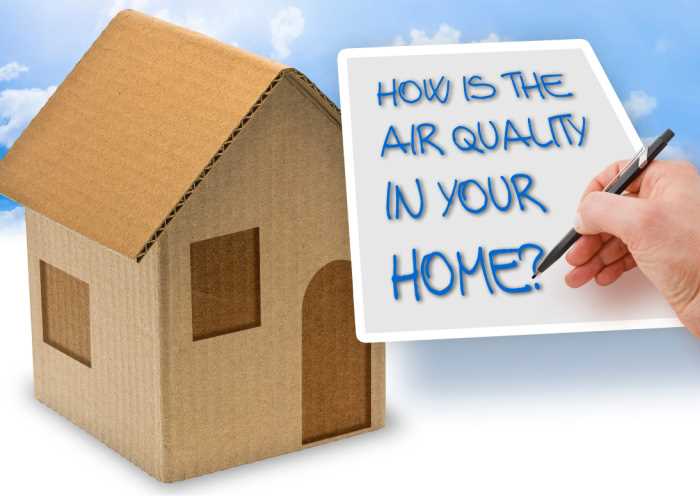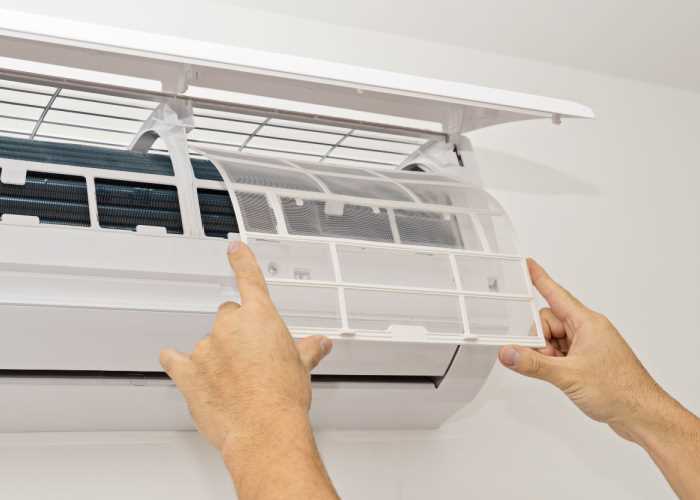Indoor air quality (IAQ) refers to the condition of the air within buildings and structures - including homes, offices, schools and other indoor environments - as it relates to the health, comfort and well-being of occupants.
It encompasses various factors and characteristics of the indoor air that can impact the overall quality of the air people breathe while inside.
To understand how air conditioning can help to combat poor IAQ in the home, we first need to look at where indoor air pollutants come from.
IAQ in the home can be influenced by a variety of sources, each of which contribute to indoor air pollution in different ways.
Common sources include:

Household products - numerous household items such as paints, solvents, cleaning products and air fresheners contain volatile organic compounds (VOCs). These VOCs can be released into the air when these products are used.
Pets - while beloved companions, pets can also introduce allergenic particles into the indoor environment. Pet dander, skin flakes and saliva can contain allergenic proteins that become airborne and contribute to indoor air quality issues.
Wood-burning stoves - these appliances emit particulate matter, carbon monoxide (CO), and various other pollutants into indoor air when in use.
Smoking - indoor smoking is a significant source of indoor air pollution. It releases a multitude of harmful chemicals, including carcinogens, into the air, making it a major contributor to poor indoor air quality.
Dust - dust particles in homes can accumulate over time and contain a mix of allergens including pollen, dust mites and pet dander. Disturbing dust can release these particles into the air.
Mould and mildew - dampness and moisture issues in homes can foster the growth of mould and mildew. These microorganisms can release spores and mycotoxins into the air, posing health risks and contributing to indoor air pollution.
Cooking - preparing meals, especially with gas stoves, can emit pollutants such as nitrogen dioxide (NO2) and particulate matter into the air.
Pollen and outdoor allergens - pollen and other outdoor allergens can enter homes through open windows and doors contributing to indoor air quality issues, especially for allergy sufferers.
Poor air quality can affect us in a variety of ways. Of course, the effects can vary depending on the specific pollutants present and the sensitivity of the individuals living in the home, but some common symptoms to look out for include:
Respiratory issues:
Allergies and asthma:
Irritated eyes, nose and throat:
Fatigue and headaches:
Skin issues:
Air conditioning is just one aspect of improving indoor air quality, and there are other essential steps to take to ensure a healthy home environment, such as maintaining cleanliness, reducing indoor pollution sources and seeking professional advice if health concerns arise.

That said, here’s how air conditioning CAN improve IAQ:
Filtration: modern air conditioning systems are equipped with filters that can capture particles like dust, pollen and some allergens, improving indoor air quality by reducing these airborne contaminants.
Humidity control: air conditioning systems can help control indoor humidity levels, which can be beneficial for IAQ. Maintaining proper humidity levels (usually around 30-50%) can prevent mould and mildew growth and reduce the spread of airborne viruses and bacteria.
Ventilation: some air conditioning systems are designed to bring in fresh outdoor air, which can help dilute indoor air pollutants and improve ventilation. This is especially important in buildings with poor natural ventilation.
However, it's important to note that the design, installation and maintenance of the system play a critical role in determining how effective it is.
To ensure that air conditioning improves rather than degrades indoor air quality, it's essential to:
Regularly maintain and clean the system: proper maintenance of the air conditioning system is crucial. This includes changing or cleaning filters as recommended by the manufacturer, cleaning coils, and booking in an annual AC service.
Ensure adequate ventilation: if your air conditioning system has the capability to bring in fresh outdoor air, make sure it is properly configured to do so. Adequate ventilation helps dilute indoor pollutants and maintain oxygen levels.
Monitor indoor air quality: consider using indoor air quality monitors to keep track of pollutant levels and IAQ conditions. This data can help you make adjustments to your HVAC system or indoor environment as needed.
By following these guidelines and maintaining a proactive approach to indoor air quality, you can ensure that your air conditioning system enhances the overall quality of the air you breathe indoors, contributing to a healthier and more comfortable living environment.
